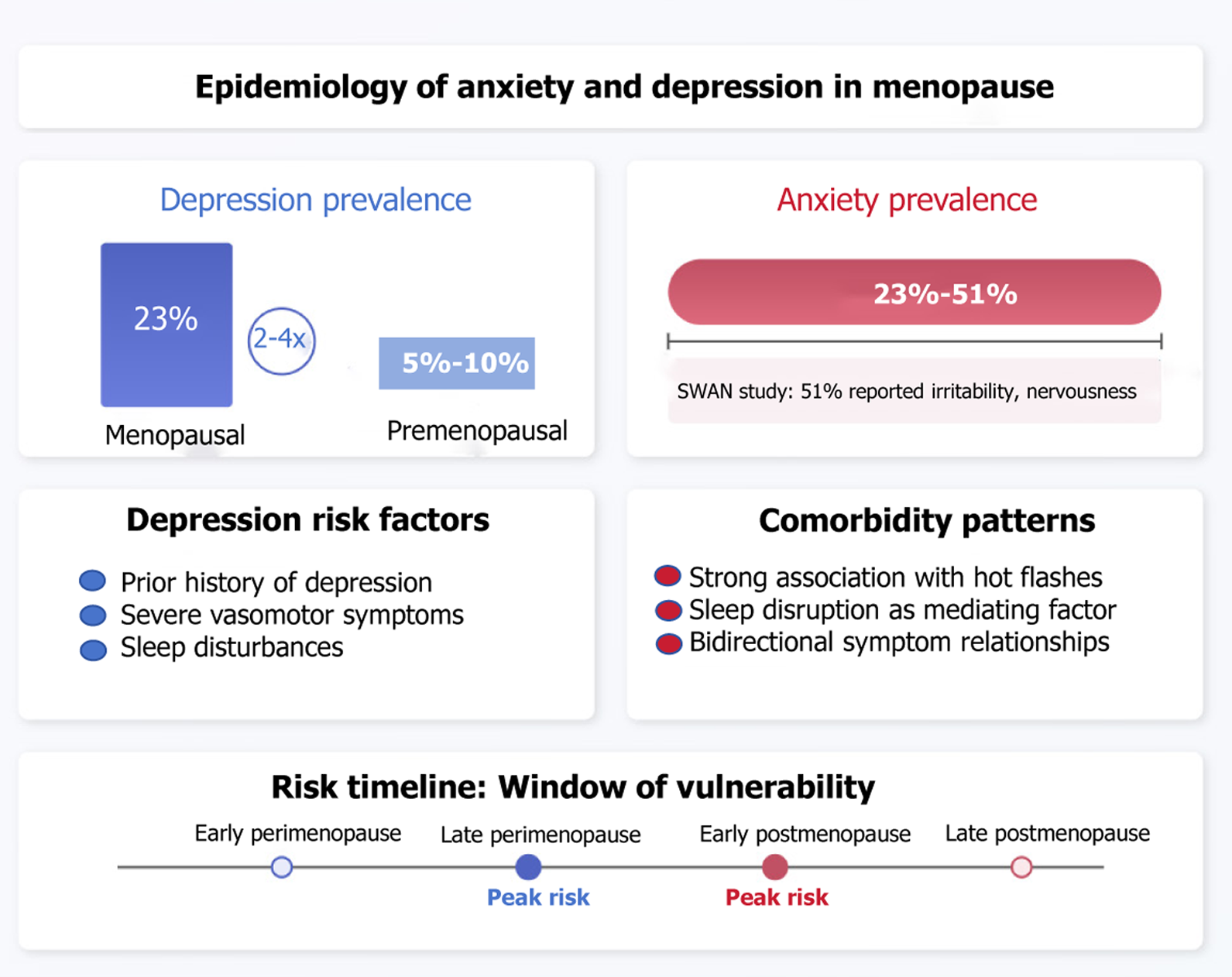Copyright
©The Author(s) 2025.
World J Psychiatry. Nov 19, 2025; 15(11): 108713
Published online Nov 19, 2025. doi: 10.5498/wjp.v15.i11.108713
Published online Nov 19, 2025. doi: 10.5498/wjp.v15.i11.108713
Figure 1 Epidemiology of anxiety and depression in menopause.
This figure presents the prevalence rates, risk factors, comorbidity patterns, and temporal vulnerability patterns of mood disorders during the menopausal transition. Depression prevalence reaches 23% in menopausal women (2.4-fold higher than premenopausal women), while anxiety prevalence ranges from 23% to 51%. The “window of vulnerability” concept illustrates peak risk periods during late perimenopause and early postmenopause, with sleep disruption serving as a key mediating factor in the bidirectional relationships between vasomotor symptoms and mood disorders.
Figure 2 Estrogen effects on neurotrophic factors and neuroplasticity.
This diagram illustrates how estrogen regulates neurotrophic factors and neuroplasticity in the brain, showing how declining estrogen levels during menopause lead to reduced brain-derived neurotrophic factor and other neurotrophic factors, subsequently affecting hippocampal neurogenesis, dendritic spine density, and synaptic plasticity, ultimately increasing depression risk. Additionally, the diagram demonstrates how hormone replacement therapy can have positive effects through restoring brain-derived neurotrophic factor levels and enhancing neuroplasticity when administered within the “critical window” of intervention. BDNF: Brain-derived neurotrophic factor; NGF: Nerve growth factor; IGF-1: Insulin-like growth factor-1; VEGF: Vascular endothelial growth factor.
- Citation: Lang XL, Huang CC, Cui HY, Zhong HX, Shen MY, Zhao F. From physiology to psychology: An integrative review of menopausal syndrome. World J Psychiatry 2025; 15(11): 108713
- URL: https://www.wjgnet.com/2220-3206/full/v15/i11/108713.htm
- DOI: https://dx.doi.org/10.5498/wjp.v15.i11.108713














